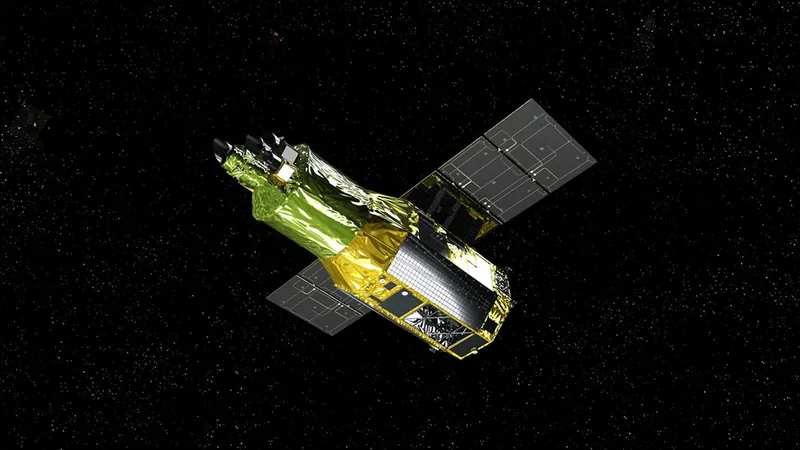
Unlocking the Mysteries of Interstellar Sulfur: XRISM’s Groundbreaking Findings
2025-06-13
Author: Siti
The X-ray Imaging Spectroscopy Mission (XRISM) is revolutionizing our understanding of interstellar elements, providing insights into the elusive sulfur (S) K-shell photoabsorption features found in the interstellar medium (ISM). This advanced mission has captured unprecedented details that could redefine how we perceive these cosmic elements.
New Discoveries of Interstellar Sulfur
For the first time, researchers have successfully detected high-signal interstellar atomic SII K-beta absorption within the spectra of X-ray binaries (XRBs) such as 4U 1630-472 and GX 340+0. The consistent presence of this feature across various instruments and under different conditions strongly indicates its interstellar origin. The study identifies the SII K-beta line centroid at 2470.8 ± 1.1 eV following a meticulous analysis of systematic uncertainties.
Puzzle of Absorption Templates Resolved?
Surprisingly, the most recently updated high-resolution SII absorption template requires an energy scale adjustment of +7-8 eV, echoing challenges encountered in atomic modeling. The XRISM’s extensive 300 ks observation of GX 340+0 has unveiled extraordinary signal-to-noise ratios in the S K region, with indications of residual absorption from solid sulfur compounds in the spectra.
Compounds Under the Microscope
Researchers analyzed absorption templates from three distinct iron-sulfur compounds—troilite (FeS), pyrrhotite (Fe₇S₈), and pyrite (FeS₂). While distinguishing among these compounds proved difficult, all provided valuable insights into the amount of sulfur locked in cosmic dust grains. This analysis revealed a direct measurement of sulfur depletion at 40% ± 15% in the line of sight of GX 340+0.
Tracking Interstellar Iron and Sulfur
The findings suggest a maximum limit of less than 25% of interstellar iron bound in iron-sulfur compounds, aligning with previous research using Fe L-shell absorption techniques. Both studied XRBs are located about 11 kpc from Earth on the opposite side of the Galactic disk, hinting that these results could reflect the average sulfur depletion across the Milky Way when considering all phases of the ISM.
The Future of Astrophysical Research
This groundbreaking study, which has been accepted for publication in the Publications of the Astronomical Society of Japan (PASJ), shines a light on the complex makeup of interstellar materials and the ongoing quest to unravel the mysteries of our universe. As XRISM continues to unveil the secrets of elements like sulfur, the scientific community eagerly awaits the next discoveries from this pioneering mission.




 Brasil (PT)
Brasil (PT)
 Canada (EN)
Canada (EN)
 Chile (ES)
Chile (ES)
 Česko (CS)
Česko (CS)
 대한민국 (KO)
대한민국 (KO)
 España (ES)
España (ES)
 France (FR)
France (FR)
 Hong Kong (EN)
Hong Kong (EN)
 Italia (IT)
Italia (IT)
 日本 (JA)
日本 (JA)
 Magyarország (HU)
Magyarország (HU)
 Norge (NO)
Norge (NO)
 Polska (PL)
Polska (PL)
 Schweiz (DE)
Schweiz (DE)
 Singapore (EN)
Singapore (EN)
 Sverige (SV)
Sverige (SV)
 Suomi (FI)
Suomi (FI)
 Türkiye (TR)
Türkiye (TR)
 الإمارات العربية المتحدة (AR)
الإمارات العربية المتحدة (AR)